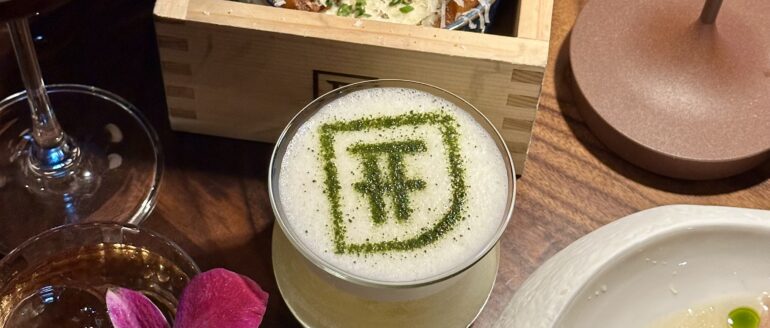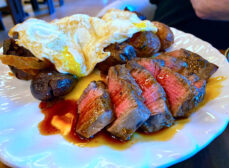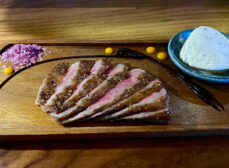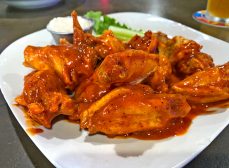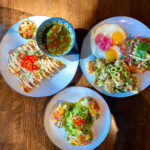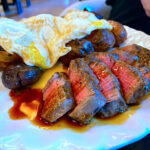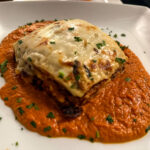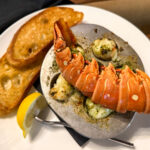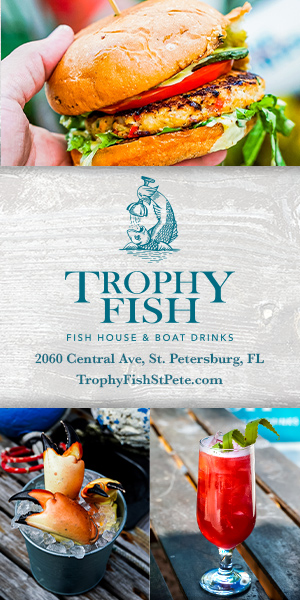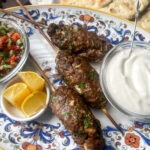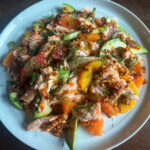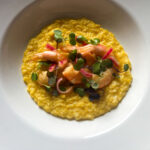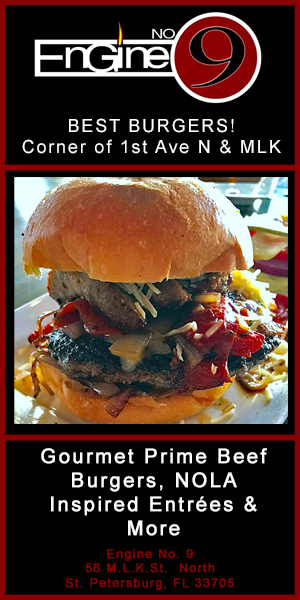There’s no screaming in the Fortu kitchen.
No overbearing culinary legend with a way too loud voice and a way too big ego at the helm.
Nathan Howey leads the cuisine team with a baseball cap on, and lots of jokes. He’s a man of few words, and he’s determined to steer away from the frigid elitism of the fine dining industry.
“Since I was 15 years old, I’ve been washing dishes and cooking food. This is what I do. I cook food,” Howey said. He’s worked at Michelin-level restaurants, attended the Culinary Institute of America, and acquired experience in everything from butchery to molecular gastronomy.
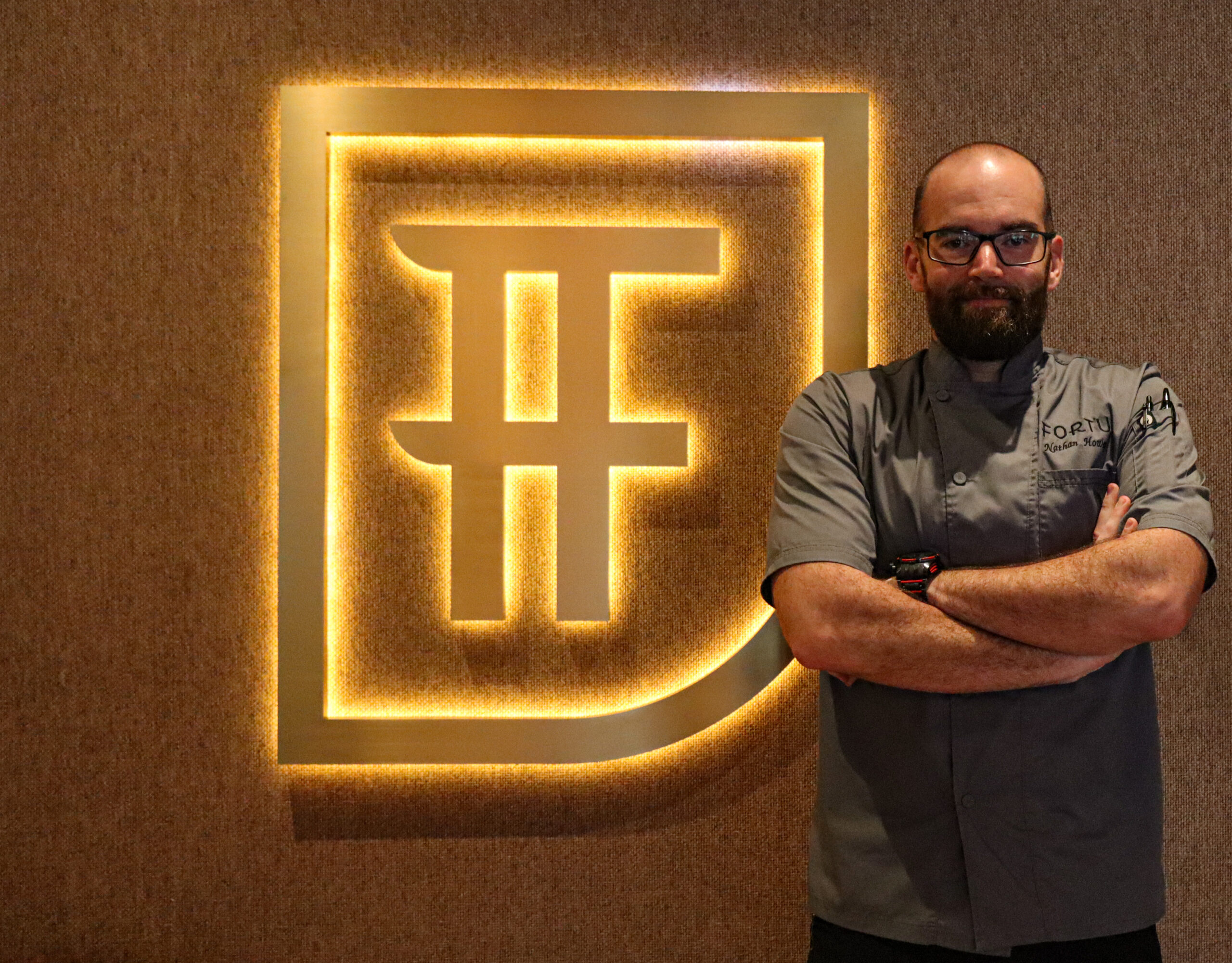
Along with Howey’s partners Cory Saffran, Corey Rose and Shan Bakrac, the group that forms Benson Hospitality owns three restaurants in St. Pete. You probably know the other two: Black Cattle Burger and Top Slice Pizzeria.
During their time working for HMS Host (one of the world’s biggest hospitality companies, specializing in F&B for travel venues) pre-Covid, Howey and Rose opened over 100 restaurants in an 8 year span.
Howey said they’ve “kind of got this process down to a science,” and it’s evident in Fortu’s operations.
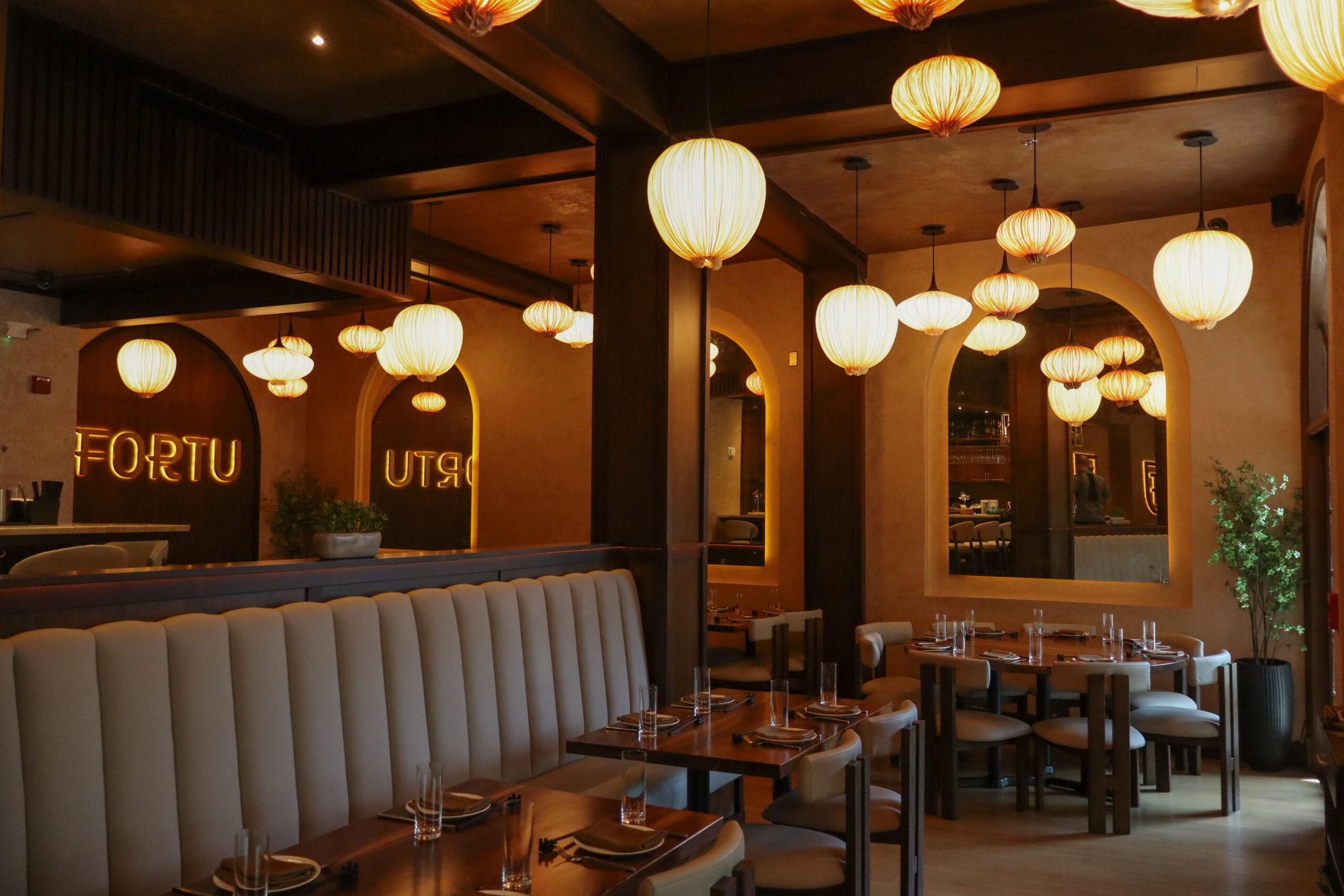
In the leftmost corner of the restaurant, a small flight of stairs leads to a short corridor wide enough for just one person. That corridor doubles as a tiny dry storage area, with all the signature players of an East-Asian eatery: soy sauce, chili crisp, nori sheets, etc.
The rest of the basement kitchen follows a similar theme: just the essentials. According to Howey, they have to restock every couple of days.
A dishwashing area claims half of the 400 sq. foot kitchen, and the rest reminded me of a college dorm room: efficiency is the name of the game, every inch of space counts. It’s laid out in a winding path, with the hot area tucked away in the back.
At 2 p.m. on a Tuesday, there were about five cooks hard at work. Gyozas were being hand-filled, meticulously sealed and lined up for service. It was chopping, cutting, packing time – all the mass preparation that happens pre-service.
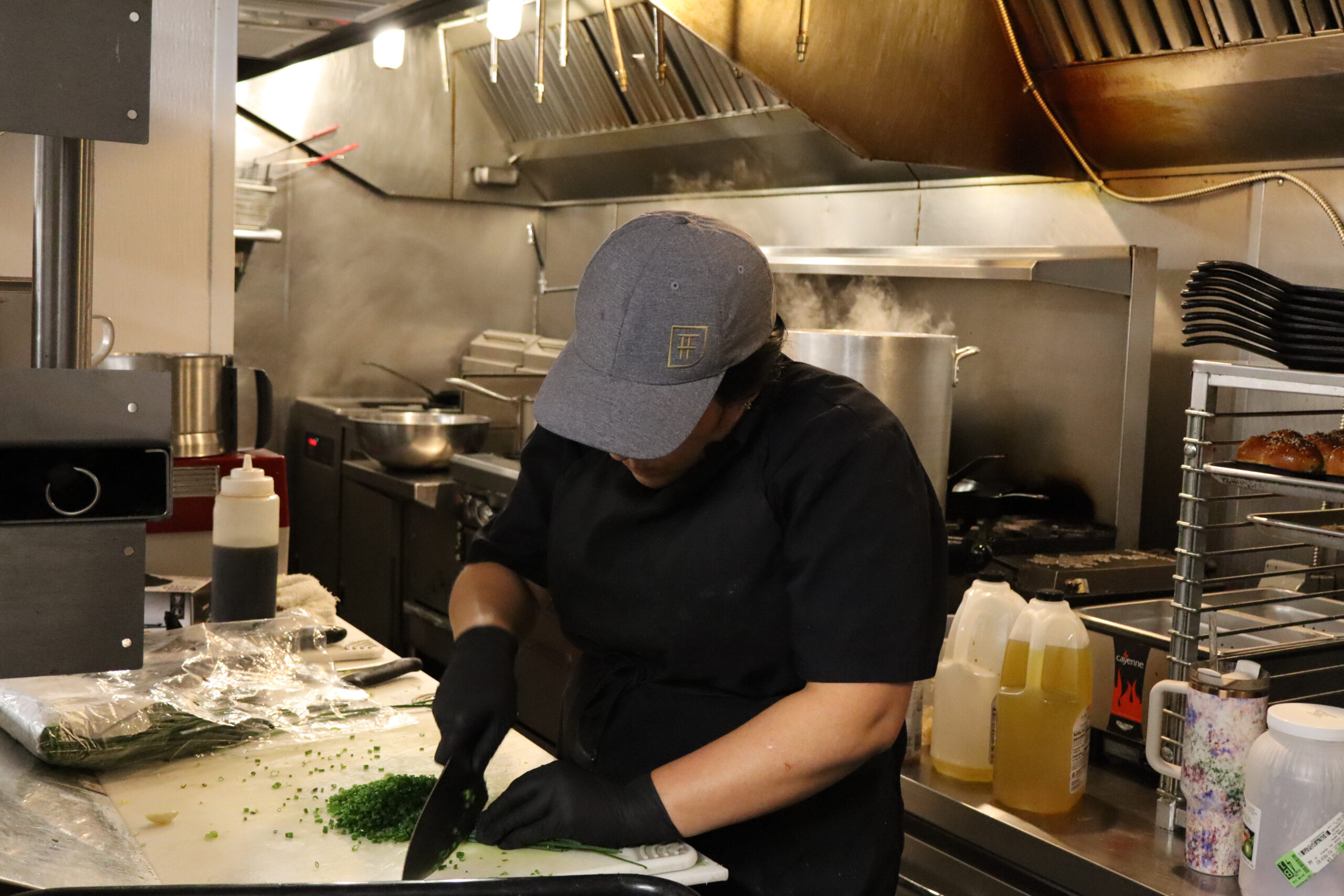
It was silent, the kind of quiet that comes from utter concentration – or being “locked in,” as my generation calls it nowadays. Everyone was wrapping up their tasks and cleaning for the service team, who replaces the prep cooks between 2-3 p.m. daily.
I exchanged a smile and wave with almost everyone who was there, but not much more – it felt wrong to disturb their laser focus. Also, most of the team exclusively speaks Spanish, Howey said, and he’s developed a comfortable gesturing system that helps him overcome the language barrier.
Japanese Chef Sam Miyashita speaks more than enough English for casual conversation, but he’d much rather just focus on his task: fish.
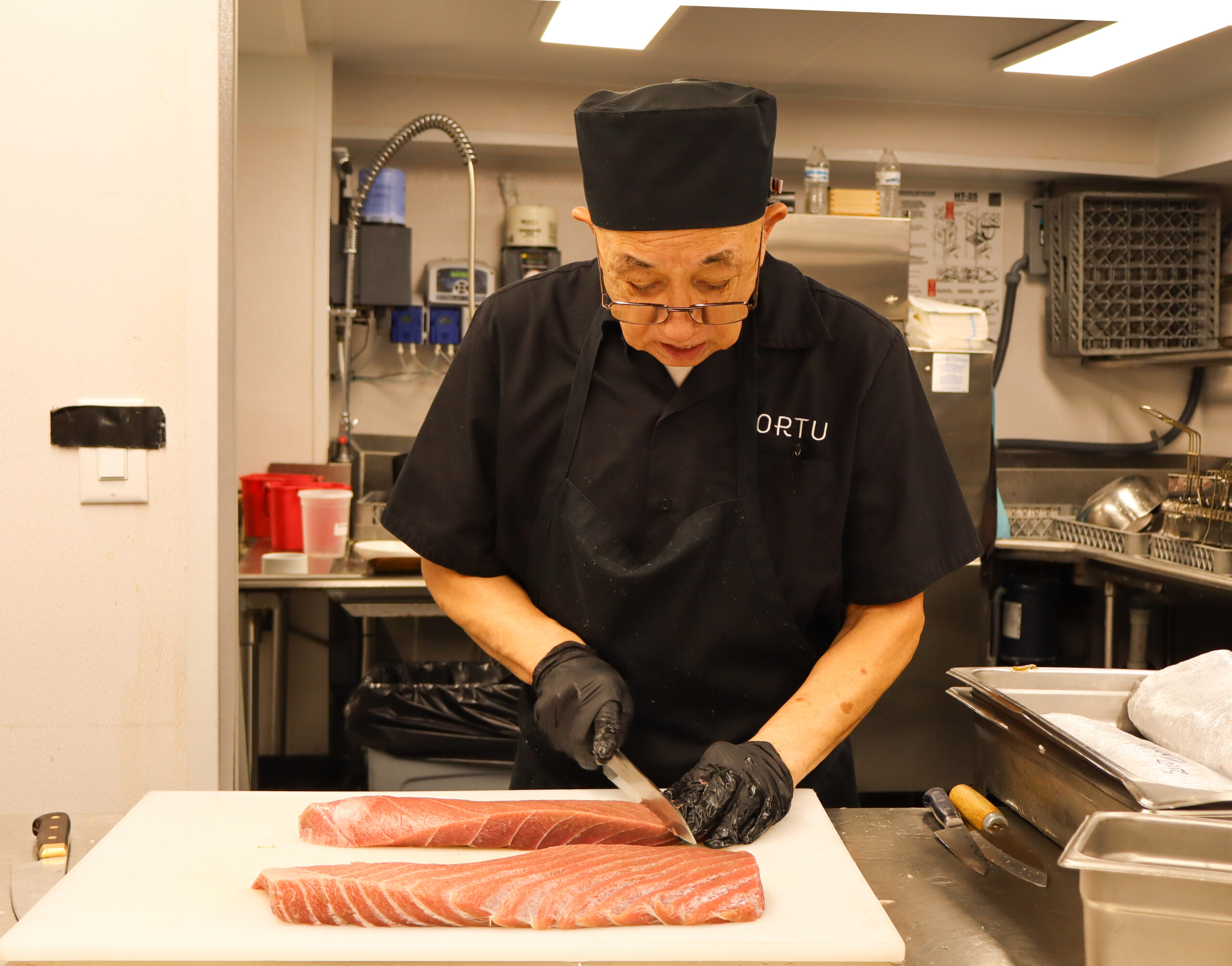
Fortu’s team is uncertain about formal titles, but Daniel Pazos acts as Chef de Cuisine – he oversees the prep team and spearheads service.
The indecision comes from the company’s unique structure: Howey oversees menu development and conceptualizing the food program. In that way, he acts as one half of an executive chef. The other half is Rose, who handles operations, labor and administration.
What I found particularly interesting was that the silence in the kitchen persisted even during service. I was there at 5 p.m. on a Tuesday, and although everyone assured me that it’s not usually this quiet, I was taken aback by the calm.
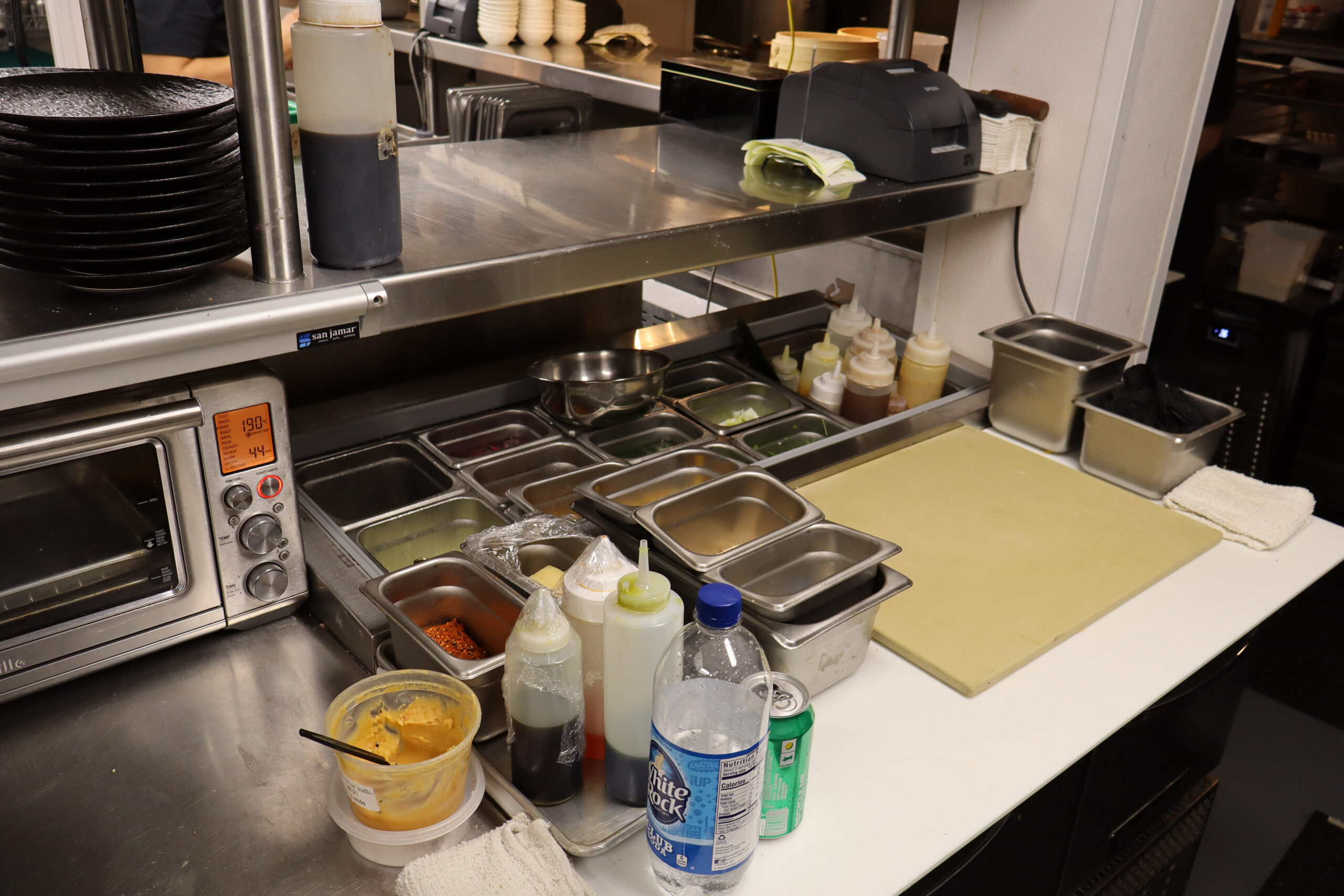
Pre-service, the servers and hostesses share espressos – a quintessential pick me up in the hospitality industry. They man their stations in their sleek, all black attire, patrolling the restaurant with heads held high.
When the diners start to pour in, there’s a subtle shift in the energy. The front-of-house team remains perfectly composed, but they quicken their step and stand up slightly straighter. Appearances are important here – it’s not your average diner.
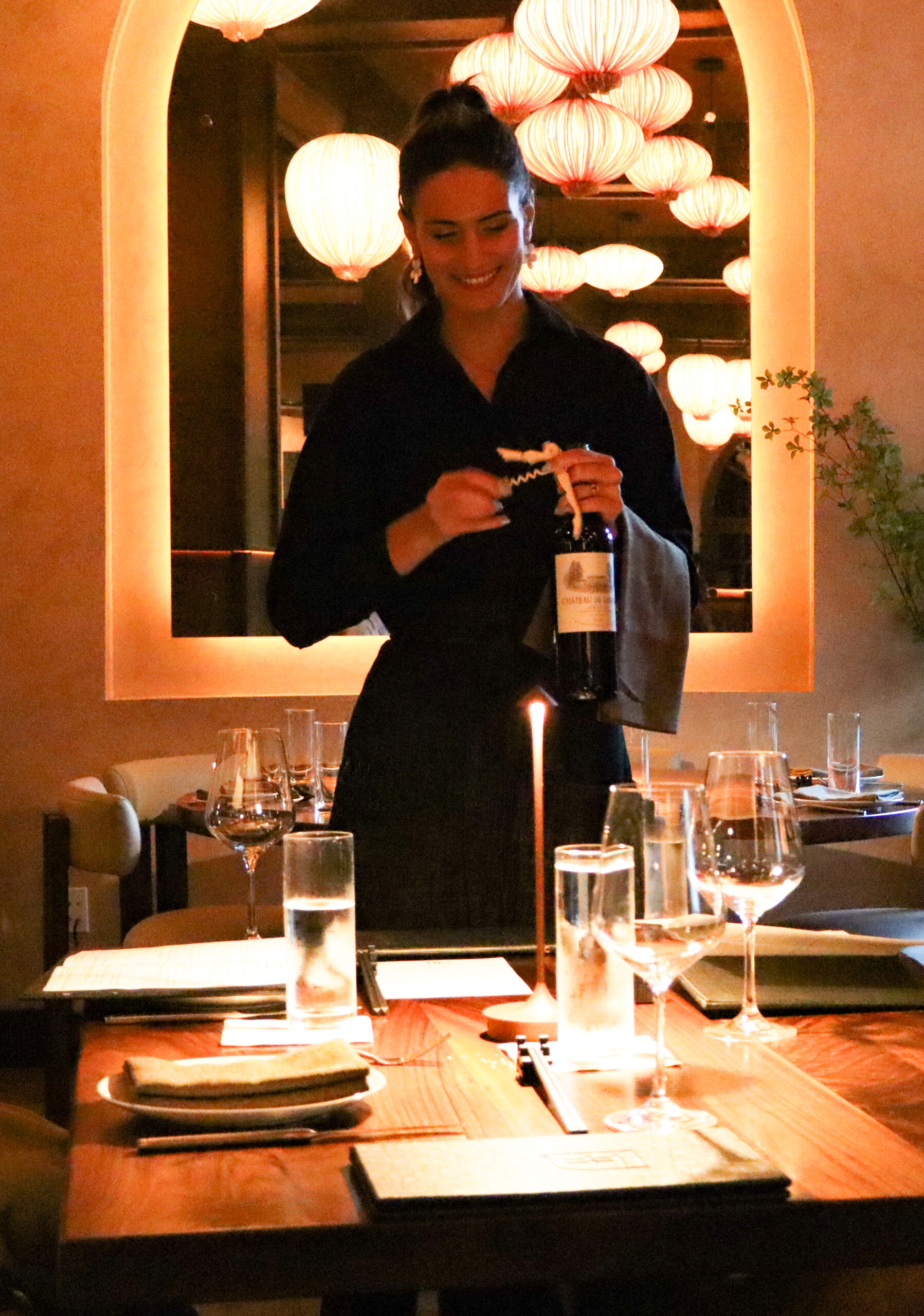
The team’s pride is as evident in their charming smiles, as it is in their vibrant, eye-catching plates.
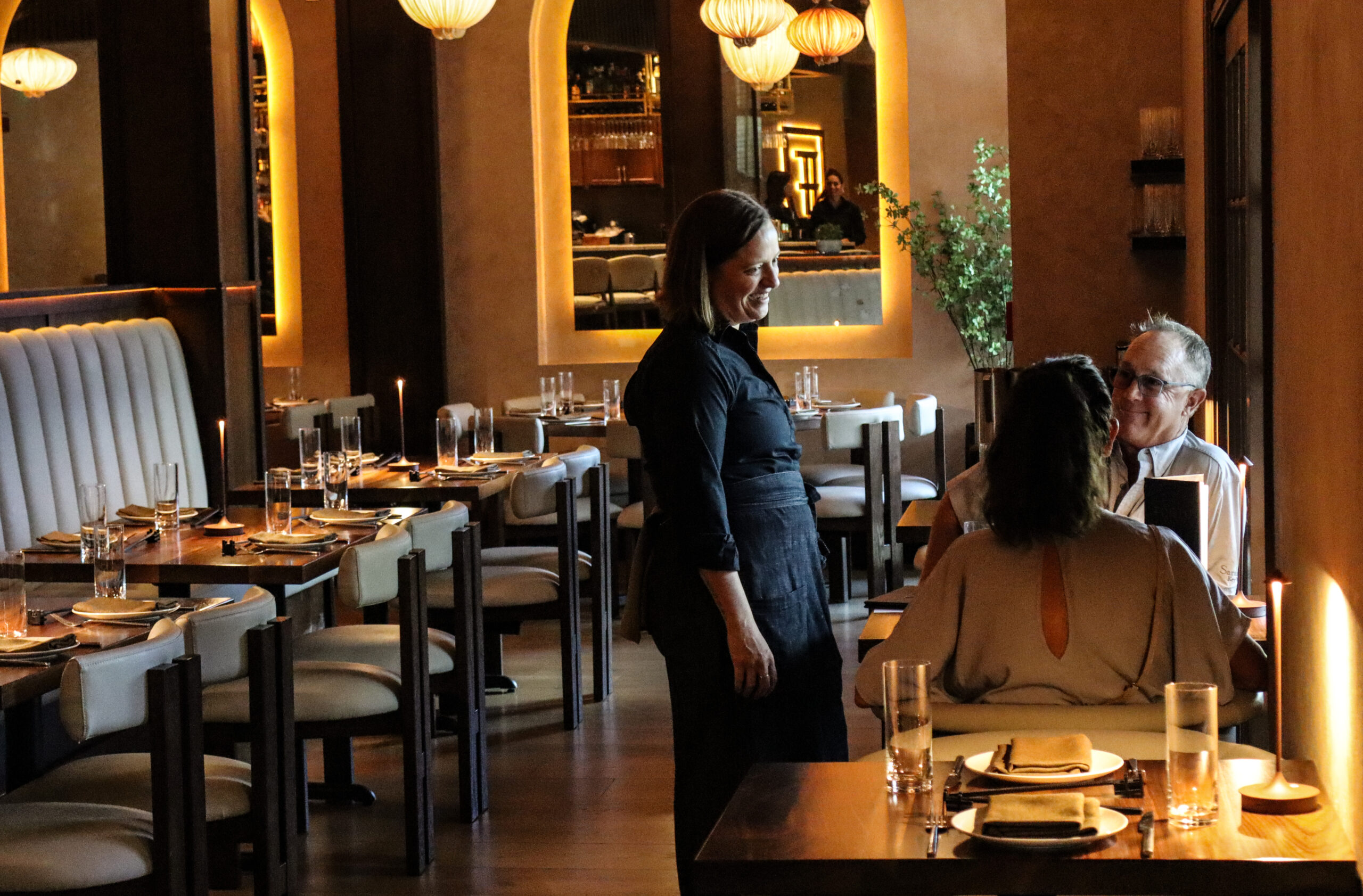
The food is Fortu’s heart and soul. Rose is first through the doors at 7 a.m. Then, Howey arrives at about 11a.m. to check everything that’s been prepared so far. He’ll check the consistency of their sauces, the pungency of their basic oil, the cut on their luxurious A5 wagyu.
After Howey heads out, Pazos leads the service team to systematic success. Cooks work in shifts, plating and preparing only their designated element, and two food runners hurry the dishes up that narrow staircase and into the hands of the servers.
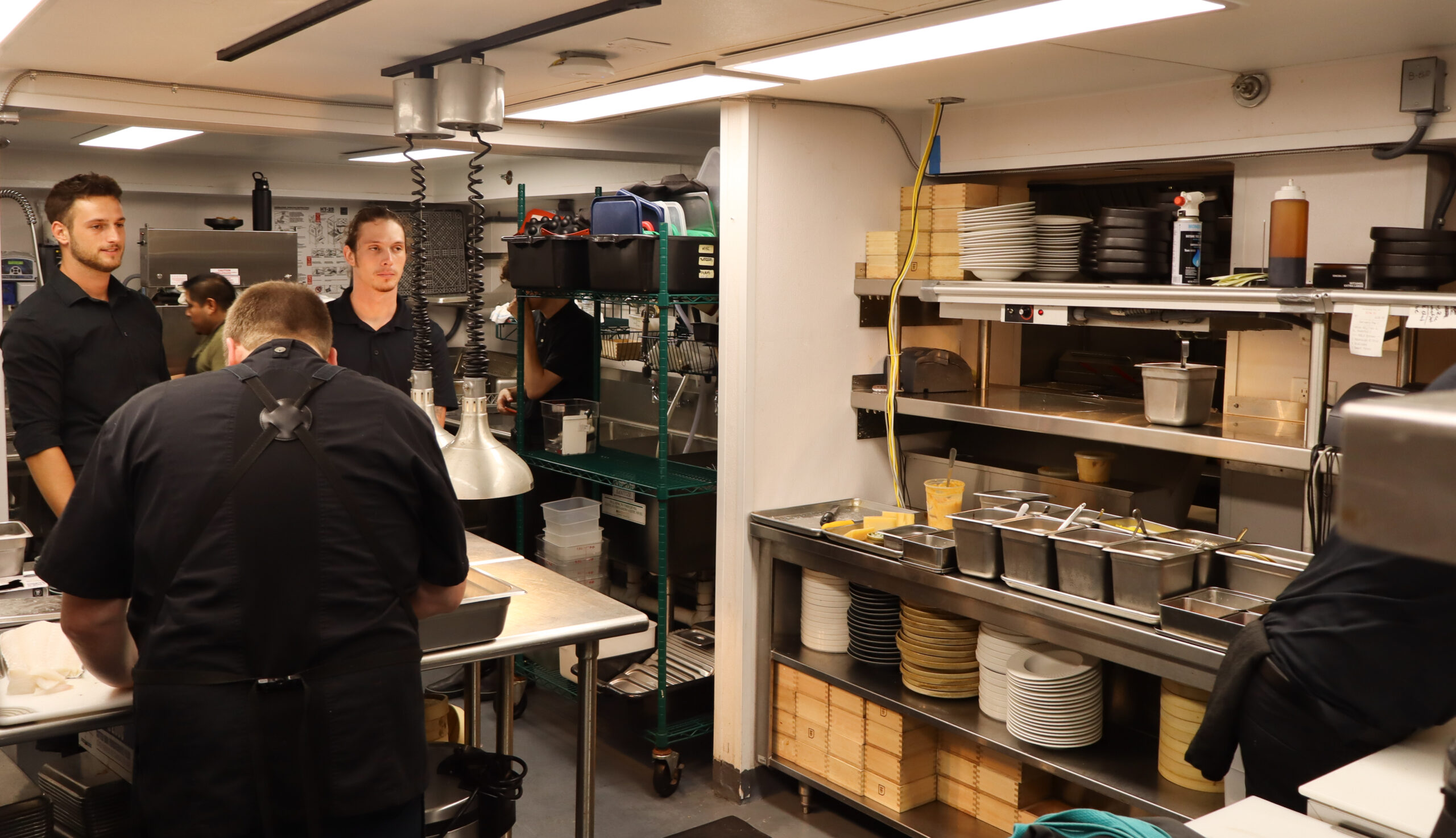
Then, each server tends to no more than three tables each. Additionally, there is also one server assistant for every two servers.
To me, these systems create a clear distinction between back and front of house. Furthermore, with a bigger team and less tables per server, the servers can tend to their designated tables more attentively. This is a classic feature of elevated dining establishments – detailed and focused hospitality.
Fortu pulled a chair up to St. Petersburg’s restaurant table in December 2023 – but it looks a little different today than it did in the initial plans. Co-owner Shan Bakrac envisioned an edgy, nightclub-esque interior in shades of deep red and champagne. You can see the proposed plans in this article by the Tampa Bay Times.
Bakrac loves the edge of Miami’s elevated dining scene, the kind where the music is so loud you’d think you’re in a nightclub, but the plates on your table look like they belong in a magazine. He wanted to recreate that with Fortu, but they scrapped those plans completely for their signature dimly lit, warm toned dining room.
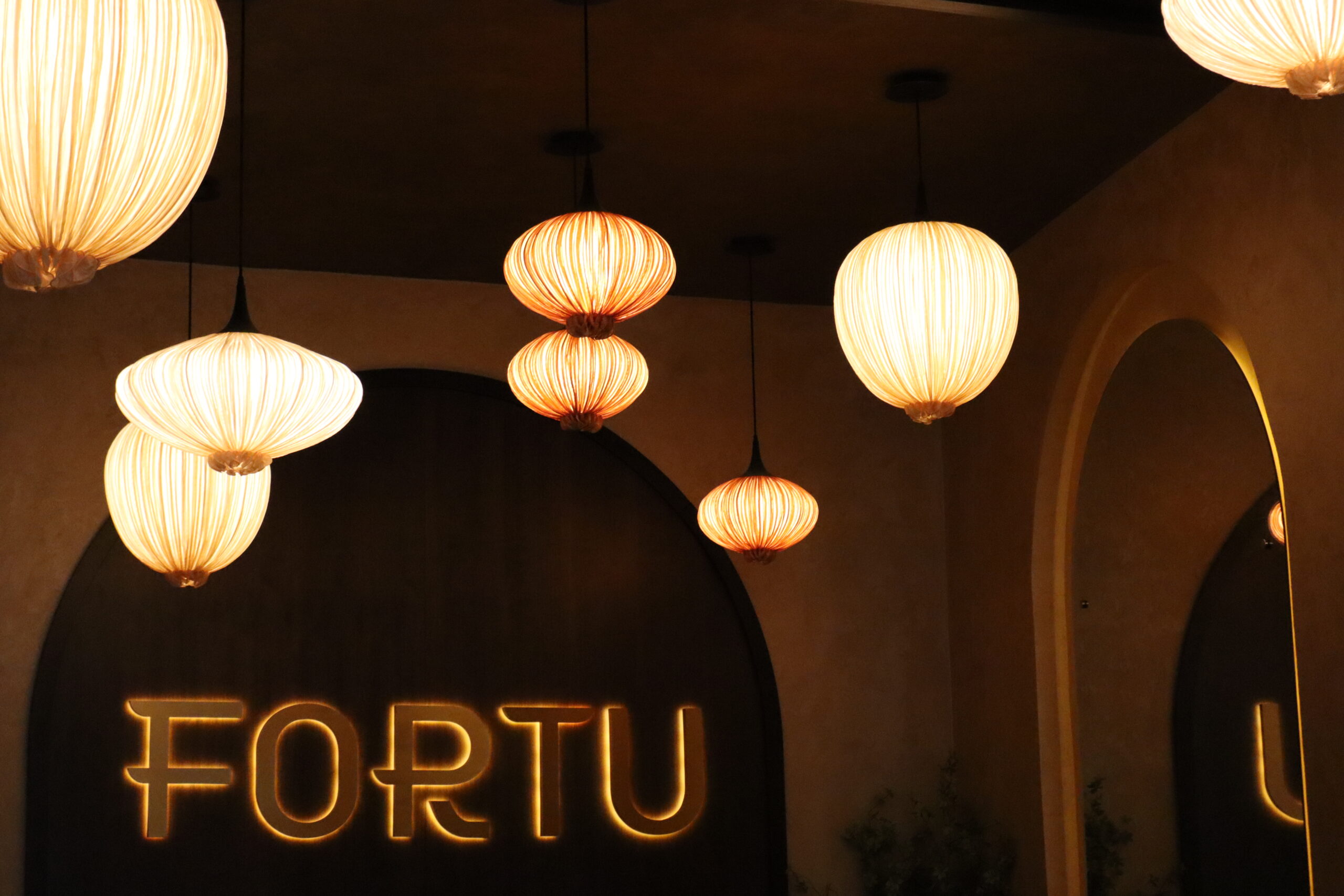
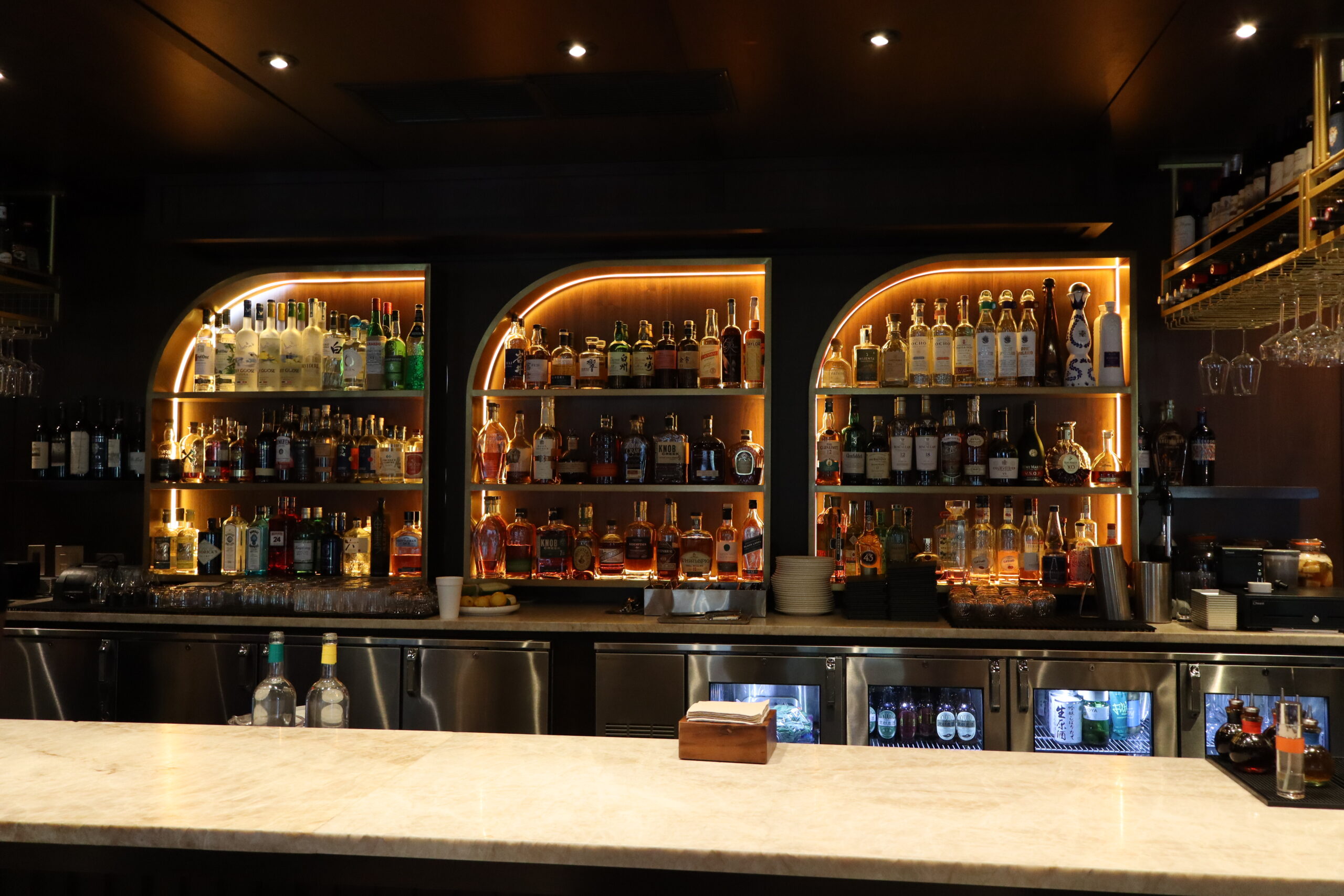
The menu itself has evolved too. After over 27 initial formal tastings, Fortu started out as an extremely high end wagyu steakhouse. Every premium cut of beef was being flown in from across the globe – but St. Pete foodies (see what I did there?) weren’t responding.
In May 2024, they pivoted to an upscale pan-asian menu. By limiting the beef offerings and adding more creative sharing plates – such as Wonton Tacos, Potato Mille Feuille and Hamachi crudo – Fortu cemented itself as a top contender for date nights and special dinners in the Sunshine City.
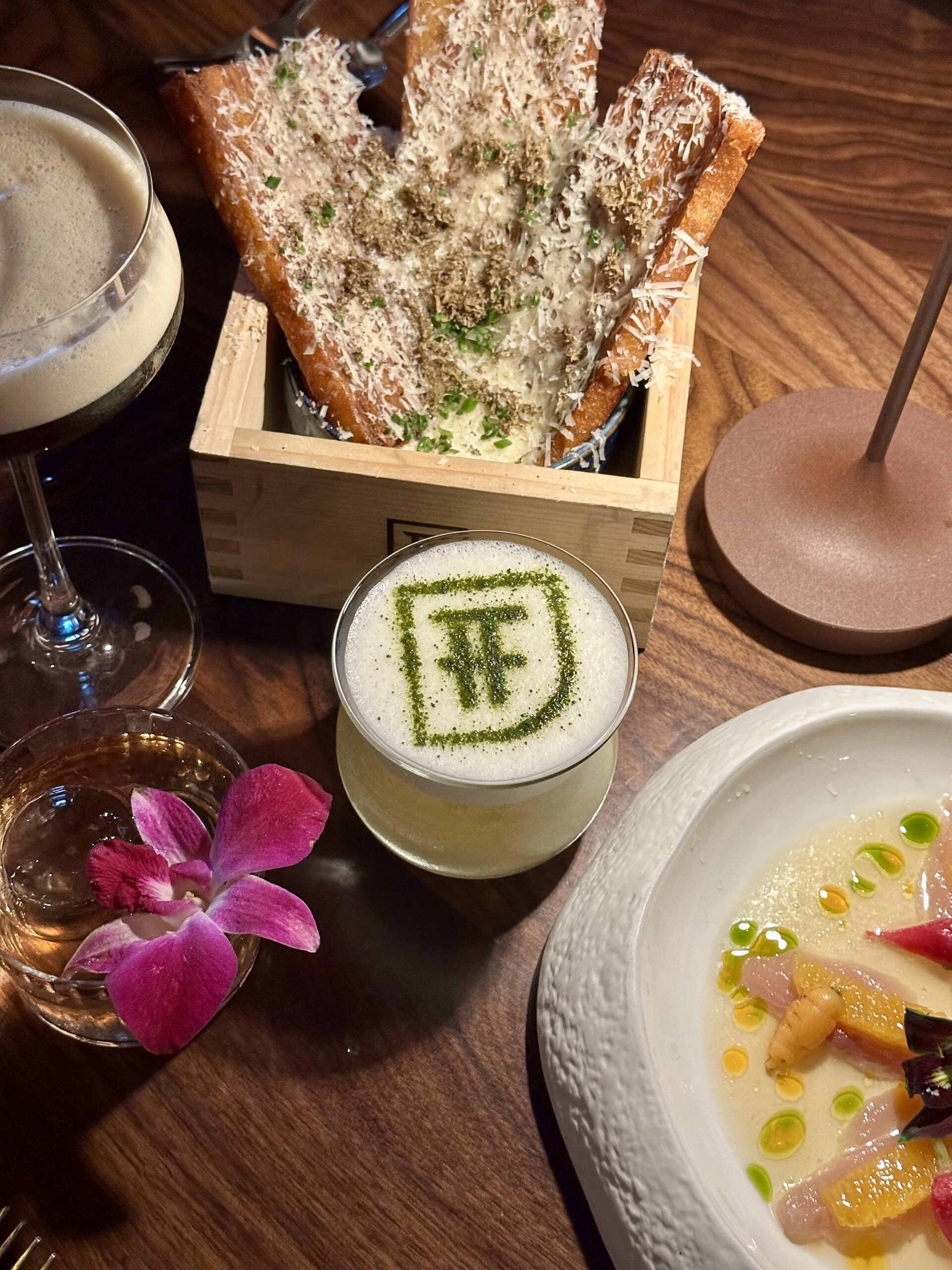
Sakura blossom (bottom-left): a sweet, floral cocktail
Kakao kohi (top-left): Fortu’s take on an espresso martini
Potato mille feuille (center-top): a signature appetizer with flaky, crispy potatoes on a bed of truffled aioli and covered in parmesan
Matcha kanji (center): a cocktail with matcha and sake; “kanji” is the word for one of the three character-based writing systems in Japanese.
Hamachi crudo (bottom right): thinly sliced raw yellowtail/hamachi on white ponzu sauce and chili oil.
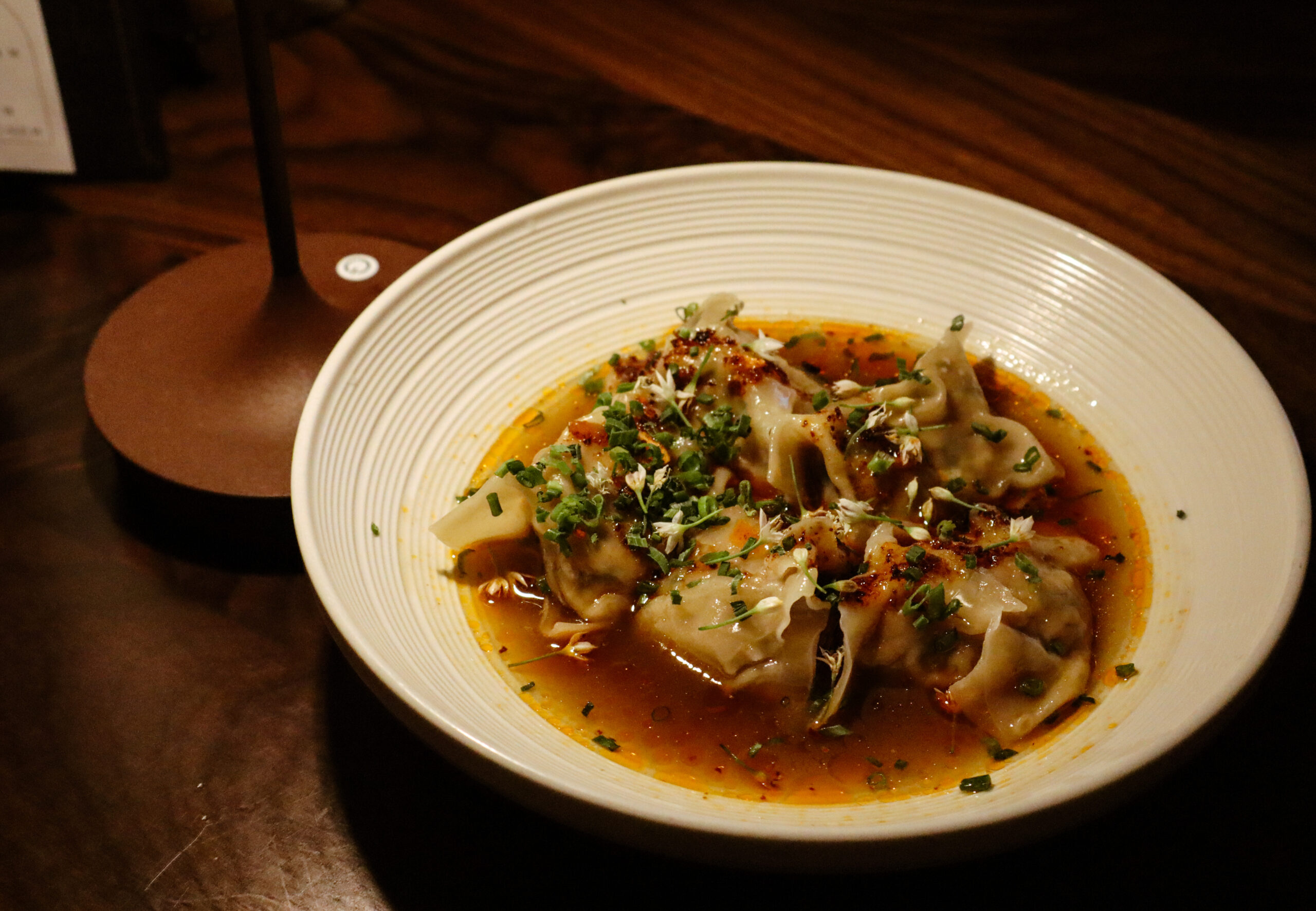
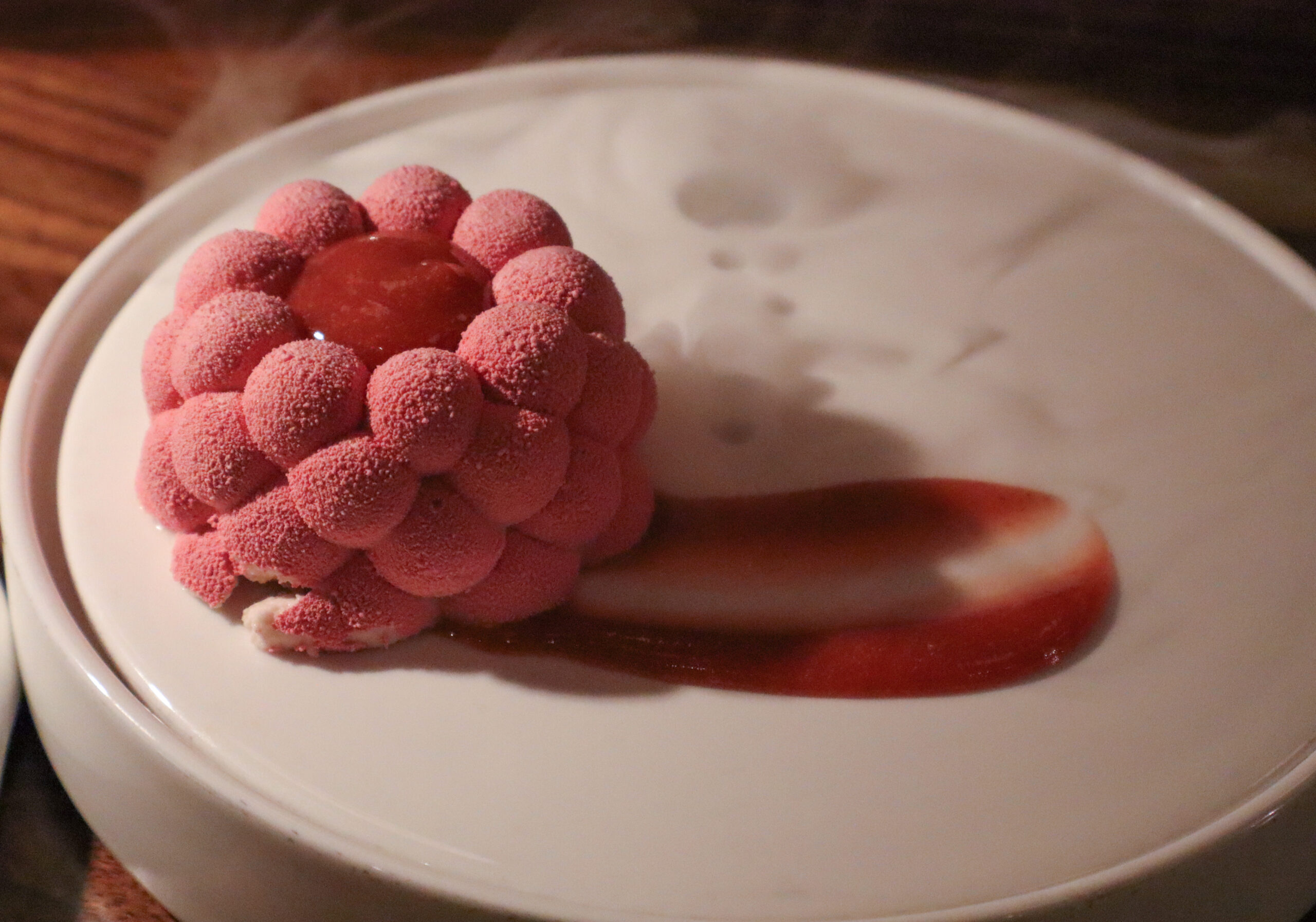
This restaurant isn’t humble. It’s not under the radar or easy on the wallet. Its location, an impressive first-floor space in the historic Ponce de Leon Hotel, is a testament to how Fortu is meant to be noticed.
From the mysterious, moody dining room to the dry ice in their signature dessert, a meal here is meant to be remembered for raising the bar.
And if you find yourself struggling to describe your experience – “What was it about this place? The food? The decor? Those jellyfish lights?” – it was actually designed that way.
“Fortu was simply a name that we developed to invoke a feeling of great ambience, excellent service and delicious food,” Howey said. “It’s really meant to be a simple title for our entire vibe… something unique that could only be described as ‘Fortu’.”
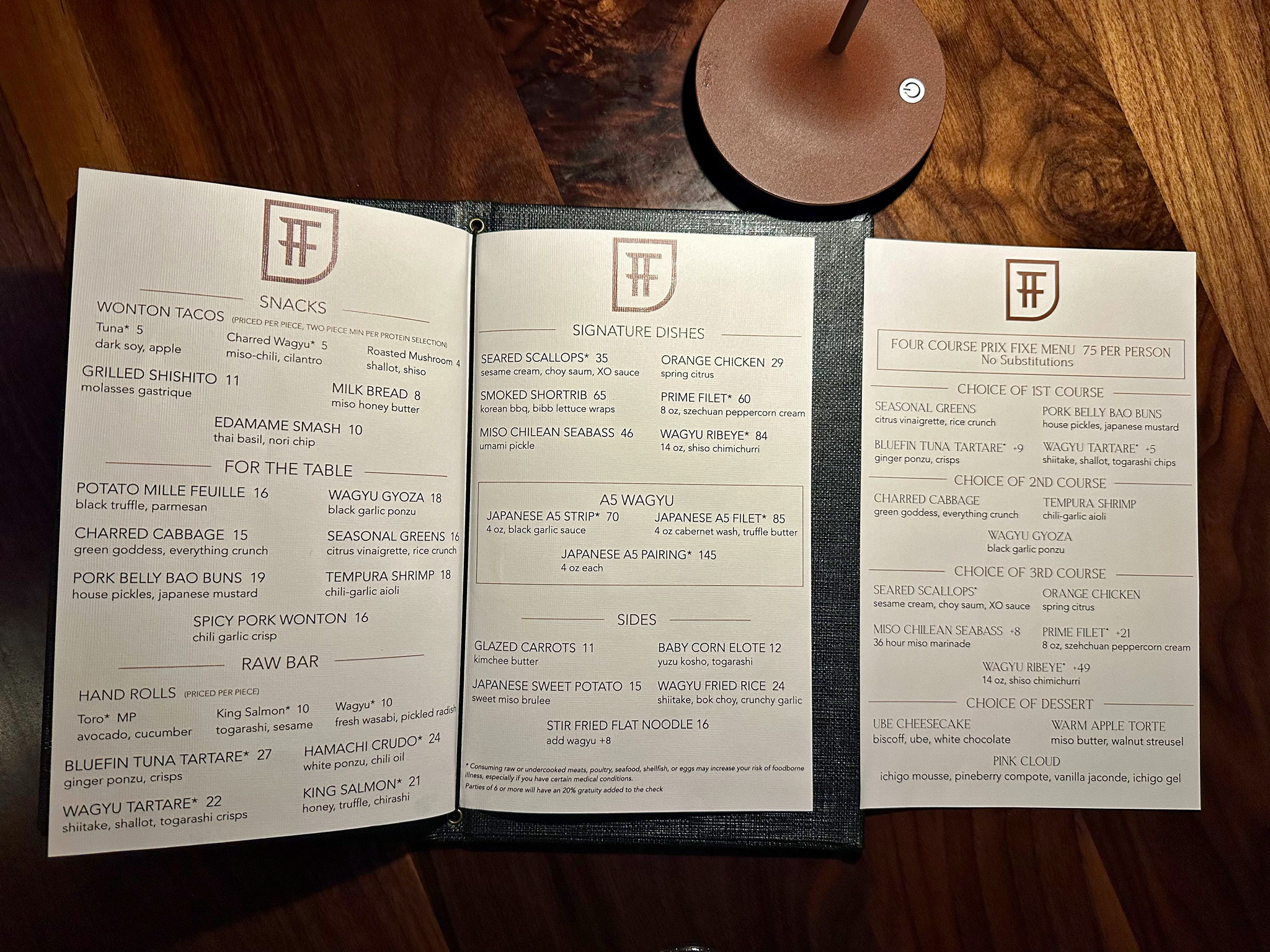
Read Kevin Godbee’s Early Review of Fortu Here
A behind the scenes look at Fortu Restaurant in St. Petersburg FL


